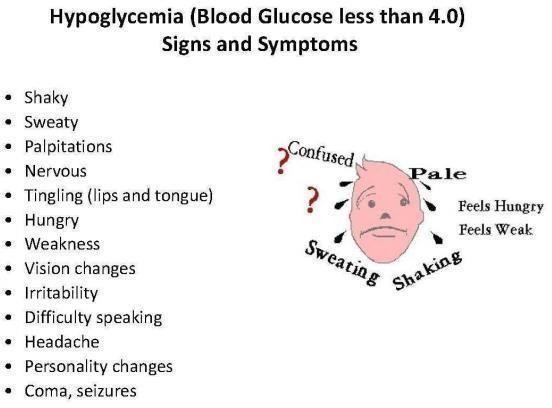A nurse is assessing a client who has type 1 diabetes mellitus and finds the client lying in bed, sweating. and reporting feeling anxious. Which of the following complications should the nurse suspect?
Hyperglycemia
Hypoglycemia
Ketoacidosis
Nephropathy
The Correct Answer is B
Rationale-The symptoms of sweating and feeling anxious in a client with type 1 diabetes mellitus are indicative of hypoglycemia. Hypoglycemia occurs when blood sugar levels fall too low, which can happen with the administration of insulin or other diabetes medications, missed meals, or increased exercise without adequate dietary adjustment. These symptoms are part of the body's natural response to low blood sugar, as it tries to signal the need for a source of energy. It is important for the nurse to recognize these signs promptly and respond with appropriate interventions, such as providing a fastacting carbohydrate, to prevent further complications associated with hypoglycemia.
A, C -Hyperglycemia and ketoacidosis presents with respiratory distress and a fruity odor. They occur due
D-Nephropathy presents with lack or reduced urine output. Injury occurs the renal tubules reduces renal ultrafiltration and reabsorption.

Nursing Test Bank
Naxlex Comprehensive Predictor Exams
Related Questions
Correct Answer is C
Explanation
C-Dextrose 5% in 0.9% sodium chloride is the most appropriate fluid for the client as it supplies both caloric, fluid and electrolytes at the same time. This ensures that the client does not go into hypoglycemia and the sodium is lowered
A- Lactated Ringer's and Dextrose 5% in 0.9% sodium chloride are isotonic and hypertonic solutions, respectively, and would not be appropriate choices for treating hypernatremia due to their higher sodium content.
B- The goal is to lower the serum sodium concentration carefully by providing a hypotonic solution. In this case, 0.45% sodium chloride is often recommended as it is a hypotonic fluid and can help to correct the sodium imbalance without overloading the client with sodium. the client requires a fluid with dextrose due to the NPO status and low sodium concentration
D- Dextrose in water (option D) is also hypotonic once the dextrose is metabolized, but it may not be as effective in this scenario as it does not contain electrolytes. The water can tip the client to hyponatremia
Correct Answer is C
Explanation
Bananas are high potassium foods recommended due to renal potassium loss in furosemide therapy. Bananas are known to be a good source of potassium, with one medium banana containing about 451 mg of the mineral.
A.- Cooked carrots contain minimal potassium
B.-Milk contains moderate potassium levels
D.-Cheddar cheese is not rich in potassium
Whether you are a student looking to ace your exams or a practicing nurse seeking to enhance your expertise , our nursing education contents will empower you with the confidence and competence to make a difference in the lives of patients and become a respected leader in the healthcare field.
Visit Naxlex, invest in your future and unlock endless possibilities with our unparalleled nursing education contents today
Report Wrong Answer on the Current Question
Do you disagree with the answer? If yes, what is your expected answer? Explain.
Kindly be descriptive with the issue you are facing.
